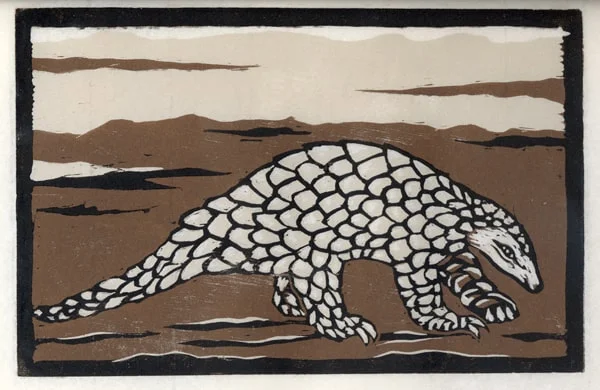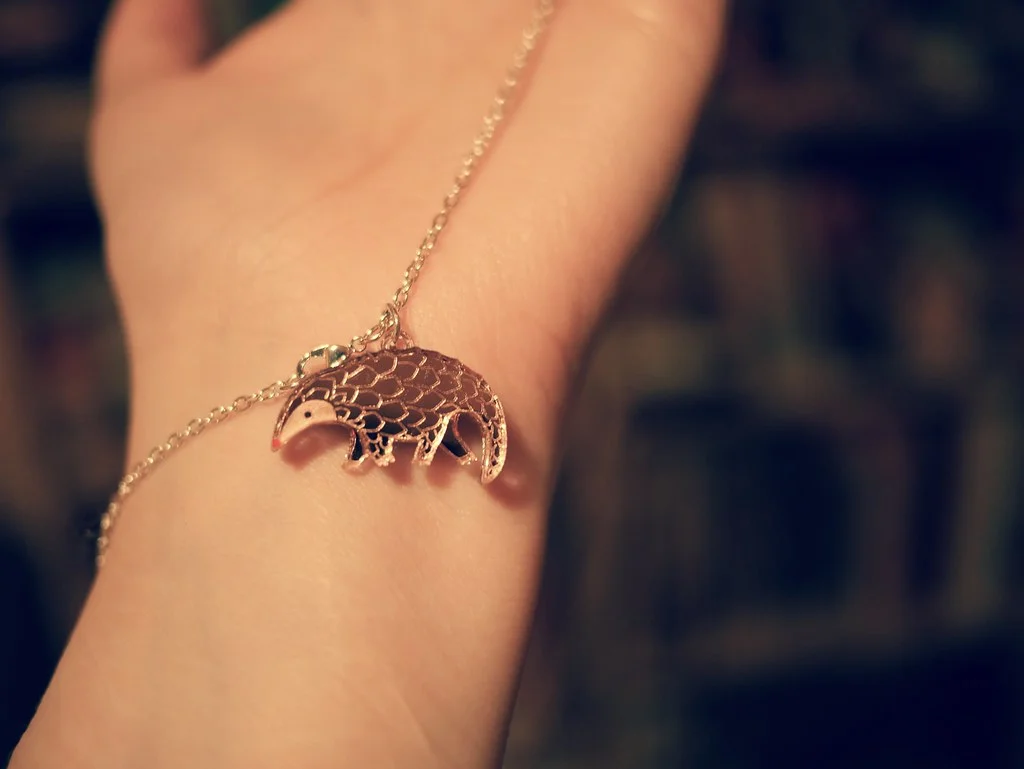In a world where wildlife faces countless threats, pangolins stand out as silent survivors with an ancient lineage. These scaly anteaters, often mistaken for reptiles, are in fact mammals with a suite of fascinating behaviors and adaptations.
However, they’re also among the most trafficked animals in the world. Through these pangolin facts, we’ll explore not only the wonders of these creatures but also the challenges they face and why protecting them is crucial for our planet.
Pangolins are not just animals; they are the silent ambassadors of Earth’s forgotten wilderness.
David Attenborough
Pangolin Facts
Before we dive into the fascinating world of pangolins, it’s crucial to absorb every detail I share. At the end of this article, a quiz awaits to test your knowledge. Are you ready to prove yourself an expert on pangolins? Read on carefully.
- These creatures are the only mammals wholly covered in scales.
- They can consume up to 20,000 ants and termites each day.
- When threatened, they roll into an almost impenetrable ball, shielding themselves from predators.
- Their tongues can be longer than their bodies when fully extended.
- Despite their appearance, they are more closely related to carnivores than to armadillos and anteaters.
- Nocturnal by nature, they spend the daytime in burrows or hollow trees.
- Their name originates from a Malay word meaning ‘rolling over’ due to their defensive posture.
- Pangolin scales are made of keratin, the same material as human fingernails and hair.
- They are solitary animals, only coming together to mate.
- The gestation period varies by species, ranging from 70 to 140 days.
- Some species can emit a noxious spray to deter predators, similar to skunks.
- Swimming and digging are among their adept skills, with some species being excellent swimmers.
- They have poor vision, relying heavily on smell and hearing to detect food and predators.

- They lack teeth, thus ingesting stones to aid in grinding up ants and termites inside their stomachs.
- Their lifespan in the wild is largely unknown, but they can live up to 20 years in captivity.
- There are eight distinct species, ranging across Asia and Africa.
- They are considered one of the world’s most trafficked mammals, primarily for their scales and meat.
- Traditional medicine practices in some cultures believe their scales have healing properties, despite a lack of scientific evidence.
- Their conservation status ranges from vulnerable to critically endangered, depending on the species.
- Climate change and habitat destruction pose significant threats to their survival.
- Infants are born with soft scales, which harden within a few days.
- They can close their ears and nostrils to keep out ants during feeding.
- They use their prehensile tails for balance and to grasp branches when climbing.
- A group of these animals is known as a ‘scurry’, though they are mostly solitary.
- They have a specialized muscle at their anus, allowing them to seal it off and protect against ant attacks.
- Their scales account for about 20% of their total body weight.
- Despite their armored appearance, they are susceptible to predation by big cats, large snakes, and humans.
- Fossil records show they have existed for more than 80 million years, surviving many changes on Earth.

- Each scale has its own growth cycle, similar to that of human hair.
- Their slow reproductive rate contributes to the difficulty of conserving and increasing their populations.
- They are known to walk on their hind legs, using their tail for balance, giving them a unique bipedal stance.
- Environmental DNA (eDNA) from rivers and streams is now used to track and monitor their populations without direct observation.
- Artificial intelligence and machine learning technologies are being employed to fight against illegal trafficking.
- They are capable of significant burrowing, with some burrows measured at over 11 feet deep.
- Their body temperature is lower than that of most mammals, hovering around 85°F (29°C).
- Some species’ scales have been observed to change color slightly, depending on humidity and temperature.
- Research indicates that their ancestors were toothed predators, unlike the modern toothless varieties.
- Vocalizations are rare but can include huffs, hisses, and grunts when they are distressed or communicating with offspring.

- They are one of the few animals that can voluntarily contract leprosy, making them valuable in medical research.
- Detachment of scales is a defensive mechanism, similar to a lizard’s tail, to escape when caught by a predator.
- Conservation programs often focus on community-based efforts, educating locals on the importance of these creatures to ecosystems.
- Ecosystem engineers, their burrowing activities aerate the soil, benefiting plant growth and water penetration.
- Their scales were historically used as armor for humans and horses in some cultures.
- A specialized enzyme in their stomach helps to break down insect exoskeletons, extracting nutrition efficiently.
- They mark their territory with urine and secretions from a gland located near the anus, deterring rivals.
- Due to their elusive nature and nocturnal habits, local myths and legends often surround them, portraying them as spirits of the forest.
- In some areas, their meat is considered a delicacy, which, combined with the demand for scales, puts immense pressure on their populations.
- Researchers use specially trained dogs to find them in the wild for research and conservation efforts.
- They can consume a variety of insect species, but their diet primarily consists of just a few ant and termite species.
- Remarkably, they can consume insects with a single flick of their long, sticky tongue, efficiently feeding without consuming soil.
Pangolin Myths

Having explored their fascinating world, it’s time to sift through the myths surrounding these unique creatures. Let’s separate fact from fiction and dispel the myths clouding their true nature.
- Pangolins Can Spray Like Skunks
Contrary to popular belief, they are incapable of spraying a foul scent to defend themselves against predators. Instead, these unique creatures rely on their thick, protective scales to shield themselves and, when threatened, roll into a tight, impervious ball. - Eating Pangolin Scales Has Medicinal Benefits
It has been mistakenly believed that consuming pangolin scales can provide health benefits. However, these scales, made of keratin—the same substance as human nails and hair—offer no proven medicinal value to humans. - Pangolins Are Reptiles
Due to their appearance, they are often mistakenly classified as reptiles. In reality, they are mammals, characterized by their possession of mammary glands and warm-blooded nature, which distinguishes them significantly from reptilian species. - Pangolins Can Be Domesticated Easily
The misconception exists that they can be easily tamed and kept as pets. However, pangolins are wild animals with specific dietary and environmental needs that are difficult to meet in captivity, making domestication highly challenging. - Pangolins Are Common and Not at Risk
Some people believe that they are common and not in danger of extinction. The truth is, pangolins are among the most trafficked mammals in the world, facing severe threats from illegal wildlife trade, and all eight species are considered at risk, with some critically endangered.
No products found.
Pangolin FAQ

We approach our final section before the quiz. Pay close attention here, as the upcoming questions are going to help you ace the following trivia.
- Are pangolins dangerous?
No, they are not dangerous to humans. They are shy, nocturnal creatures that tend to avoid human contact. When threatened, their primary defense mechanism is to roll up into a ball, using their tough scales for protection rather than attacking. - What do pangolins eat?
They have a diet primarily consisting of ants and termites. They use their long, sticky tongues, which can extend farther than the length of their bodies, to probe into ant nests and termite mounds to lap up their insect prey. - Are pangolin scales bulletproof?
While their scales are incredibly tough and made of keratin (the same material as human fingernails), they are not bulletproof. However, their scales are strong enough to provide protection against natural predators like lions and tigers. - What is the lifespan of a pangolin?
They can live quite a long life under the right conditions, with a lifespan ranging from 10 to 20 years in the wild. Their longevity can vary depending on species and environmental factors. - Are pangolins endangered?
Yes, they are endangered. All eight species of pangolins are classified by the International Union for Conservation of Nature (IUCN) as ranging from vulnerable to critically endangered due to poaching and habitat loss. Their scales and meat are highly valued in the illegal wildlife trade, which has severely impacted their populations worldwide.
Pangolin Trivia

Welcome to our pangolin quiz, where the stakes are as high as a pangolin’s love for ants. Fail to answer correctly, and you might find your socks perpetually filled with sand, mimicking a pangolin’s habitat!
Conclusion
It’s evident that these creatures are not just survivors but silent warriors in the battle against environmental challenges. With their unique characteristics and ecological importance, they deserve our respect and protection.
By supporting pangolin conservation, we’re taking a step towards a more sustainable and compassionate world. So, as we close this chapter, let’s keep our spikey friends in mind and make choices that help protect their future. Till next time, stay curious. Cheers.
3 Sources Used For This Article

